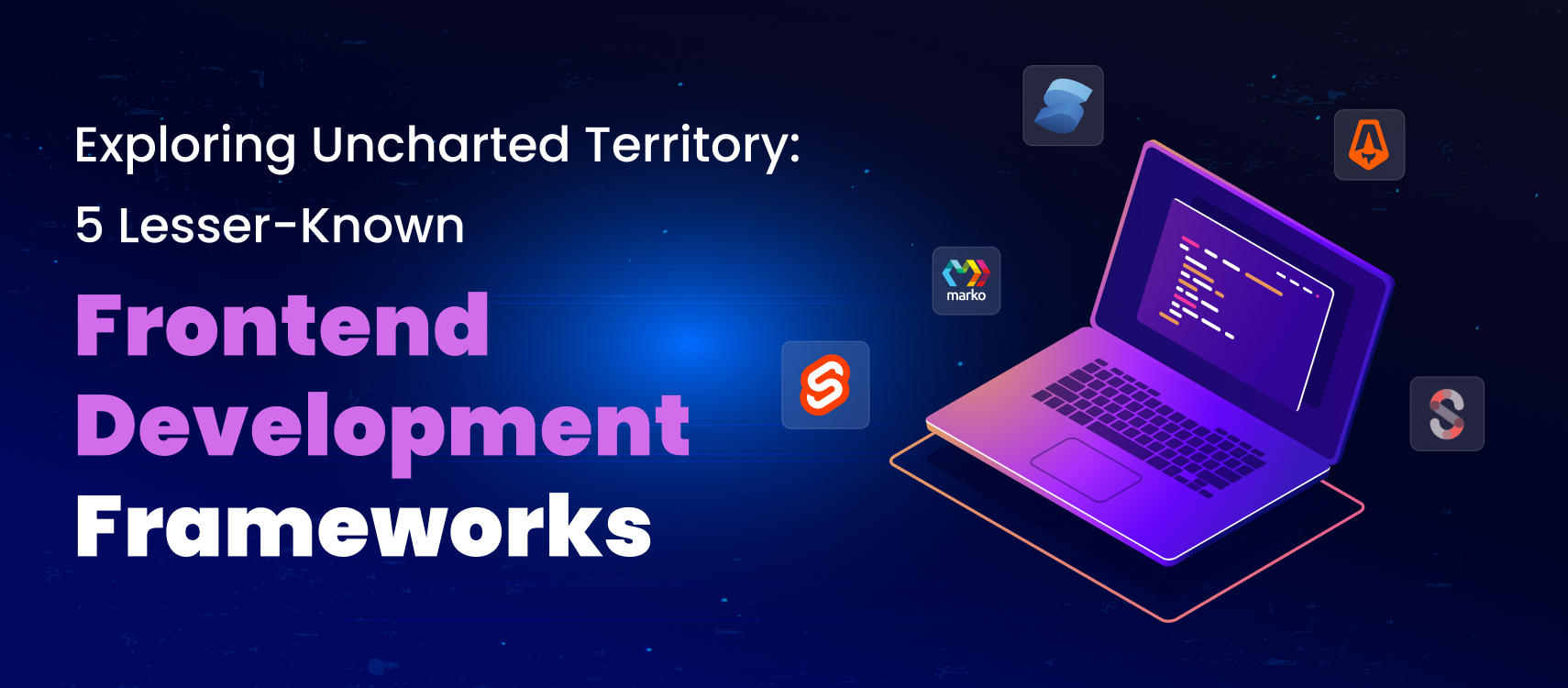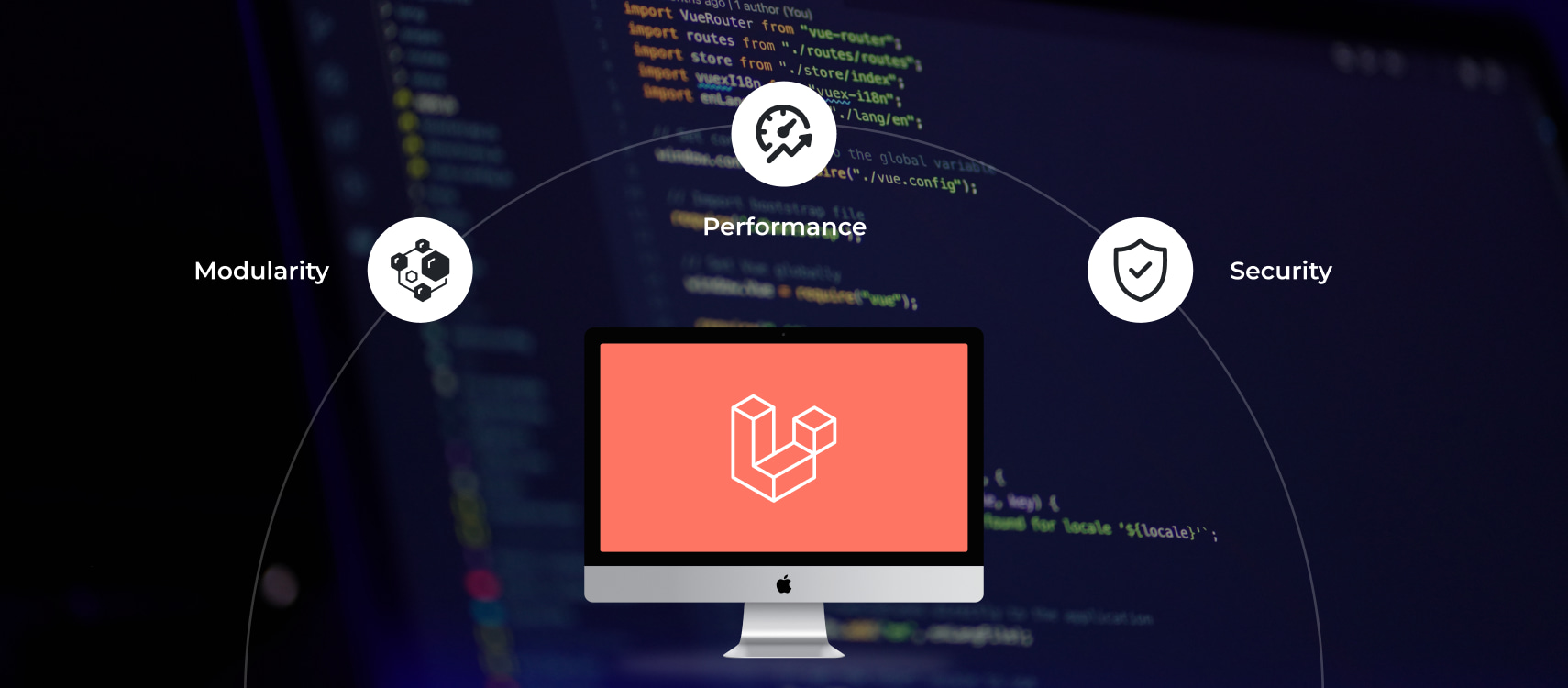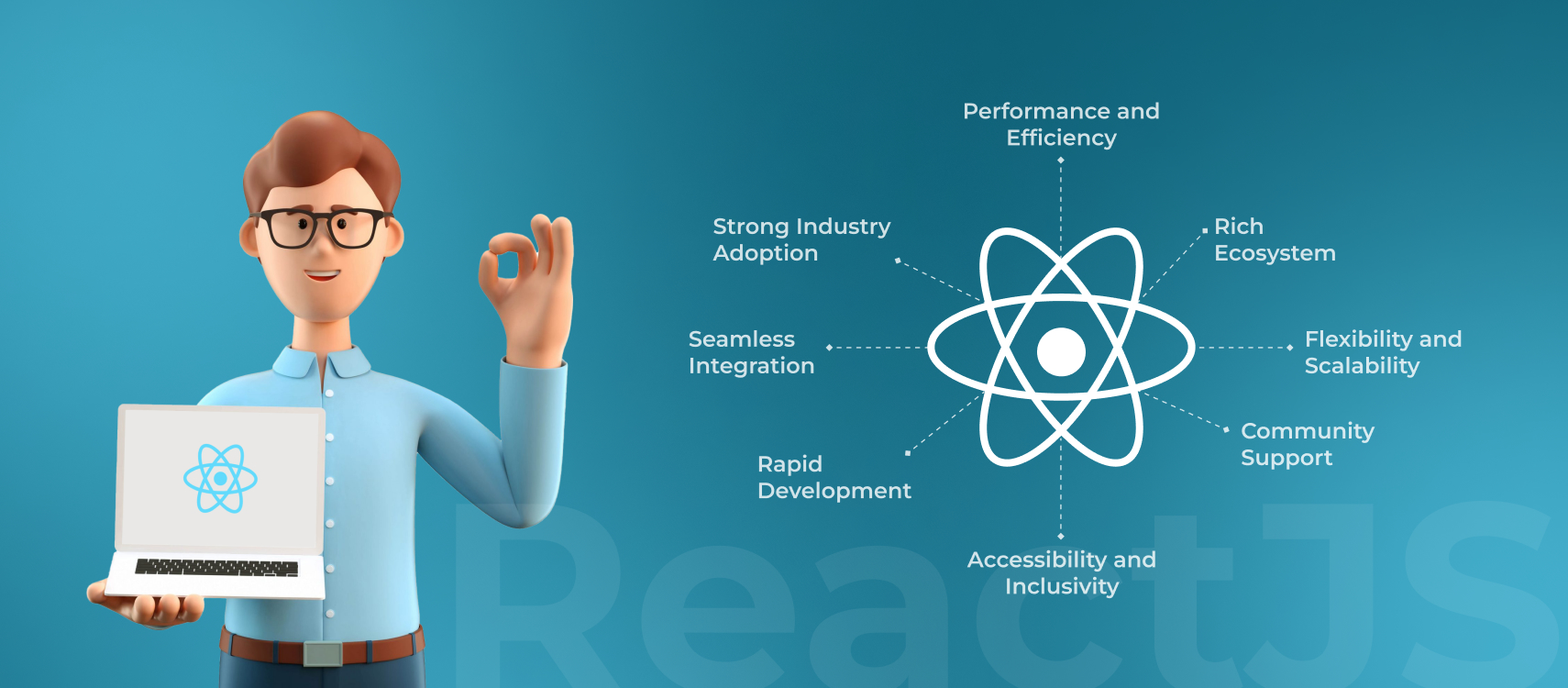Table of Contents
- SvelteKit: Power of Compiled Components
- SolidJS: Reimagining Reactivity
- Astro: Blazing-Fast Static Sites
- Solidarity: A Focus on Accessibility
- Marko: Performance-Oriented Templating
- Ending Notes
Frontend development has witnessed a rapid evolution over the years, with well-established frameworks like React, Angular, and Vue.js dominating the landscape. However, beyond these giants, a new wave of frontend development frameworks has emerged, each bringing its unique strengths to the table.
In this article rather we are going to fish out some of the lesser-known frontend development frameworks that are making waves in the industry. These frameworks might not have garnered mainstream attention yet, but they are brimming with their innovative potential. Here we go.
SvelteKit: Unleashing the Power of Compiled Components
SvelteKit, an extension of the Svelte framework, has been gaining traction among frontend web developers who seek a more streamlined approach to building frontend applications. Unlike traditional frontend frameworks, SvelteKit embraces the concept of compiled components, which brings a host of advantages to the development process.
SvelteKit enables developers to write expressive code that gets compiled into highly optimized JavaScript at build time. This compilation step results in faster runtime performance, as there is no need for a virtual DOM or runtime framework. Additionally, SvelteKit offers server-side rendering (SSR) out of the box, improving search engine optimization (SEO) and initial loading times.
One of SvelteKit’s standout features is its automatic code splitting, which optimizes bundle sizes and enhances page load times. This approach empowers developers to create efficient applications that deliver a seamless user experience.
Furthermore, SvelteKit supports both static site generation (SSG) and server-side rendering, allowing developers to choose the best approach for their specific projects. This flexibility ensures that developers can leverage the framework’s strengths while accommodating diverse project requirements.
Example: Imagine building an e-commerce platform with SvelteKit. The compiled components enable lightning-fast performance, while automatic code splitting ensures that product pages load swiftly, enhancing user engagement.
SolidJS: Reimagining Reactivity
SolidJS is a declarative frontend web development framework that focuses on reactivity and performance optimization. This framework embraces a novel reactivity model known as the ‘Signal pattern.’ Similar to push/pull patterns, SolidJS’s Signal pattern introduces fine-grained change detection, enabling efficient updates only where necessary.
The Signal pattern eliminates the need for a virtual DOM, as updates are applied directly to the DOM. This approach results in unparalleled runtime performance and a smoother user experience. SolidJS’s granular change detection also paves the way for improved developer productivity, as unnecessary computations are avoided.
Another highlight of SolidJS is its small bundle size. Thanks to its minimalist architecture, the framework produces lightweight applications that load quickly, reducing the time users spend waiting for content to appear.
SolidJS’s reactivity model and compact bundle size position it as an excellent choice for applications that require real-time updates and high performance, such as interactive dashboards or collaborative tools.
Example: Consider building a live data visualization dashboard with SolidJS. The Signal pattern ensures that only the components affected by changing data points are updated, leading to a responsive and efficient dashboard experience.
Astro: Blazing-Fast Static Sites
Astro has gained attention for its unique approach to building front-end applications. This framework focuses on creating exceptionally fast static websites by intelligently pre-rendering only the necessary components.
Astro’s core concept is ‘partial hydration.’ Instead of hydrating the entire application, Astro hydrates only the components required for the initial view. Subsequent interactions trigger the loading of additional components on demand, significantly enhancing runtime performance.
Astro supports multiple rendering strategies, including static site generation (SSG), server-side rendering (SSR), and client-side rendering (CSR). This versatility empowers developers to choose the strategy that best suits their project’s needs.
The framework’s architecture is module-centric, allowing developers to use components from different libraries and frameworks interchangeably. This modularity fosters code reusability and flexibility while maintaining optimal performance.
Example: Imagine developing a content-rich blog platform with Astro. The partial hydration approach ensures that blog articles load swiftly while maintaining an engaging and interactive reading experience.
Solidarity: A Focus on Accessibility
Solidarity is a frontend web development framework that places accessibility at its core. While accessibility is a crucial aspect of any application, Solidarity goes a step further by incorporating accessibility considerations directly into its development model.
Solidarity embraces a ‘design first’ approach, encouraging developers to consider accessibility from the outset. The framework provides a range of tools and components that adhere to accessibility standards, simplifying the process of creating inclusive user interfaces.
By promoting accessible design practices, Solidarity aims to reduce the need for retroactive accessibility improvements, ultimately saving development time and fostering a more inclusive digital landscape.
Example: Building an e-learning platform with Solidarity ensures that all users, including those with disabilities, can easily access and engage with the educational content, enhancing the platform’s reach and impact.
Marko: Performance-Oriented Templating
Marko is a frontend framework that focuses on high-performance rendering through its innovative templating engine. Marko’s engine compiles templates into highly efficient JavaScript code, resulting in reduced runtime overhead and faster rendering speeds.
One of Marko’s standout features is its ‘morphdom’ diffing algorithm, which optimizes updates by minimizing the number of DOM manipulations required. This approach enhances performance by reducing the browser’s workload, resulting in a smoother user experience.
Marko also supports server-side rendering, allowing developers to deliver initial page loads quickly and efficiently. The framework’s minimalist design philosophy ensures that applications built with Marko are lightweight and responsive.
Example: Creating a news aggregator platform with Marko would result in fast and seamless content updates, enhancing user engagement and satisfaction.
Ending Notes
Each of these frameworks brings its unique strengths to the table, addressing specific development challenges and offering fresh perspectives on building performant, accessible, and engaging user interfaces. While these frameworks might be relatively unknown compared to the giants of the industry, their potential for reshaping front-end development cannot be underestimated. As developers continue to explore these lesser-known gems, the realm of frontend development is poised for even more exciting advancements.










